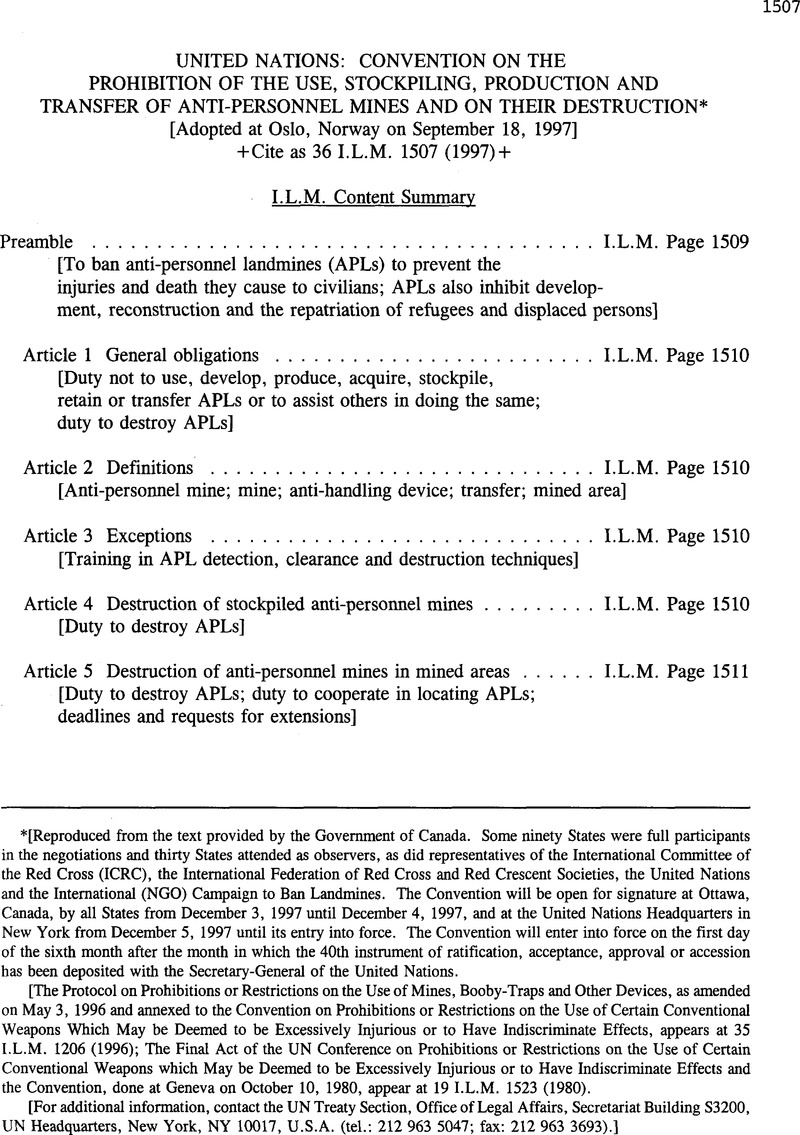Published online by Cambridge University Press: 27 February 2017

* [Reproduced from the text provided by the Government of Canada. Some ninety States were full participants in the negotiations and thirty States attended as observers, as did representatives of the International Committee of the Red Cross (ICRC), the International Federation of Red Cross and Red Crescent Societies, the United Nations and the International (NGO) Campaign to Ban Landmines. The Convention will be open for signature at Ottawa, Canada, by all States from December 3, 1997 until December 4, 1997, and at the United Nations Headquarters in New York from December 5, 1997 until its entry into force. The Convention will enter into force on the first day of the sixth month after the month in which the 40fh instrument of ratification, acceptance, approval or accession has been deposited with the Secretary-General of the United Nations.
[The Protocol on Prohibitions or Restrictions on the Use of Mines, Booby-Traps and Other Devices, as amended on May 3, 1996 and annexed to the Convention on Prohibitions or Restrictions on the Use of Certain Conventional Weapons Which May be Deemed to be Excessively Injurious or to Have Indiscriminate Effects, appears at 35 I.L.M. 1206 (1996); The Final Act of the UN Conference on Prohibitions or Restrictions on the Use of Certain Conventional Weapons which May be Deemed to be Excessively Injurious or to Have Indiscriminate Effects and the Convention, done at Geneva on October 10, 1980, appear at 19 I.L.M. 1523 (1980).
[For additional information, contact the UN Treaty Section, Office of Legal Affairs, Secretariat Building S3200, UN Headquarters, New York, NY 10017, U.S.A. (tel.: 212 963 5047; fax: 212 963 3693).]